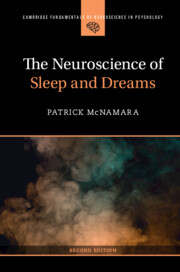Book contents
- The Neuroscience of Sleep and Dreams
- Cambridge Fundamentals of Neuroscience in Psychology
- The Neuroscience of Sleep and Dreams
- Copyright page
- Dedication
- Contents
- Figures
- Tables
- Preface
- Acknowledgments
- Chapter One What Is Sleep?
- Part I Sleep
- Part II Dreams
- Chapter Seven What Are Dreams?
- Chapter Eight Dreams across the Human Lifespan
- Chapter Nine Characteristics of REM and NREM Dreams
- Chapter Ten Dream Varieties
- Chapter Eleven Theories of Dreaming
- References
- Index
- References
Chapter Nine - Characteristics of REM and NREM Dreams
from Part II - Dreams
Published online by Cambridge University Press: 06 April 2023
- The Neuroscience of Sleep and Dreams
- Cambridge Fundamentals of Neuroscience in Psychology
- The Neuroscience of Sleep and Dreams
- Copyright page
- Dedication
- Contents
- Figures
- Tables
- Preface
- Acknowledgments
- Chapter One What Is Sleep?
- Part I Sleep
- Part II Dreams
- Chapter Seven What Are Dreams?
- Chapter Eight Dreams across the Human Lifespan
- Chapter Nine Characteristics of REM and NREM Dreams
- Chapter Ten Dream Varieties
- Chapter Eleven Theories of Dreaming
- References
- Index
- References
Summary
While REM sleep is the phase of sleep from which dream reports are most reliably elicited, dream reports can also be elicited from any other stage of sleep, including sleep onset and N3 SWS. Reports after awakenings from NREM stages of sleep tend to be shorter, less emotional, and less visually vivid than reports obtained from REM – but we do get reports of “dreams” from NREM sleep states. Indeed, you can get dream reports without REM when REM is chemically suppressed via antidepressant medications. Just as dreams can occur without REM, REM sleep can occur without dream reports. About 20 percent of awakenings after a REM episode results in no dream report. Activation of REM, therefore, does not necessarily eventuate in a dream or at least a dream report. In addition, children who have abundant REM do not consistently report dreams until visuo-spatial and cognitive skills have matured enough to support reporting of visual narratives (Foulkes, 1982). Similarly, patients with lesions in the orbitofrontal cortex, basal forebrain, and near the occipitotemporoparietal junction sometimes report complete cessation of dreaming (Solms, 1997). In addition, Solms emphasized that disconnection of the ascending meso-limbic-cortical dopaminergic tracts from their termination sites in ventromedial frontal lobes could also lead to the loss of dreaming. Given that this tract is associated with instinctual appetitive drive and motivational states, it seems reasonable to conclude that this dopaminergic system may participate in the generation of some dreams. The loss of dreaming in these patients is not due simply to an inability to recall dreams, as their basic memory and recall abilities are largely intact. REM physiology as measured by sleep EEG is normal in these individuals, thus REM is still operating.
- Type
- Chapter
- Information
- The Neuroscience of Sleep and Dreams , pp. 160 - 172Publisher: Cambridge University PressPrint publication year: 2023



